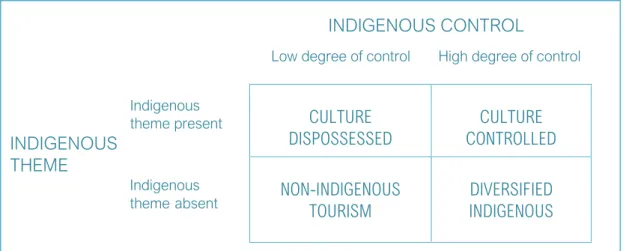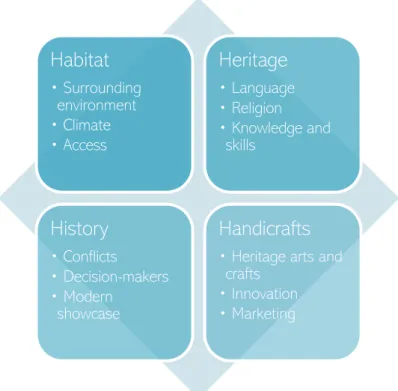Title of dissertation Developing Culturally Sensitive Sámi Tourism in Finnish Lapland – Sámi Entrepreneurs' Perspective Number of pages 47 + 2. The principles of culturally sensitive tourism in figure 1 show the breadth of the concept.
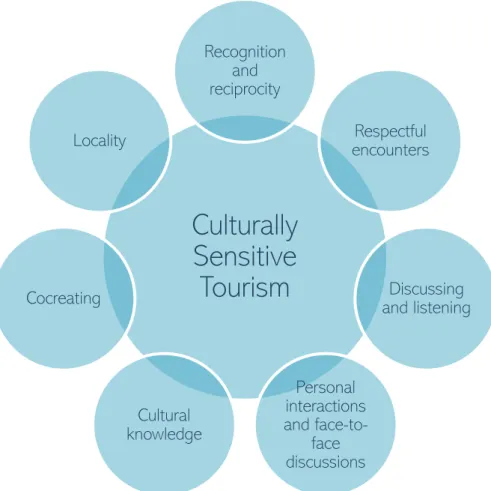
Defining Indigenous Tourism
Tourism activities that strongly emphasize indigenous characteristics but are not controlled by the indigenous people themselves are considered culturally expropriated. Diversified Indigenous Activities include tourism activities that are not centered on the Indigenous theme, but are controlled by Indigenous peoples.
Benefits of Indigenous Tourism
In the case of indigenous peoples, habitats are often located in more rural areas, such as the Arctic. It also includes the knowledge and skills required for group-specific survival, such as hunting.
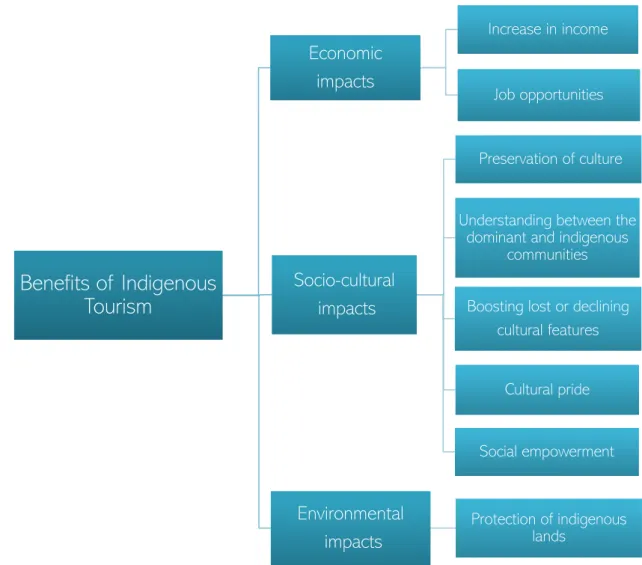
Issues and Challenges of Indigenous Tourism
According to the Finnish Institute of Health and Welfare (2020), the nature of the traditional Sami livelihoods puts the practitioners of reindeer herding and other traditions in an unequal position in terms of social security. Local people may not approve of the use of their social spaces for tourism purposes, as it may promote overcrowding, which may have negative social and environmental consequences. In some cases, tourism can even force local villages and neighborhoods to be moved out of the way of developing industry.
Any of the above effects can lead to negative relationships between the indigenous and dominant communities. However, residents may prefer to show even the more shocking features of the culture to allow for a deeper understanding between the Indigenous and non-Indigenous people, rather than hiding certain aspects that could lead to mixed opinions to lead.
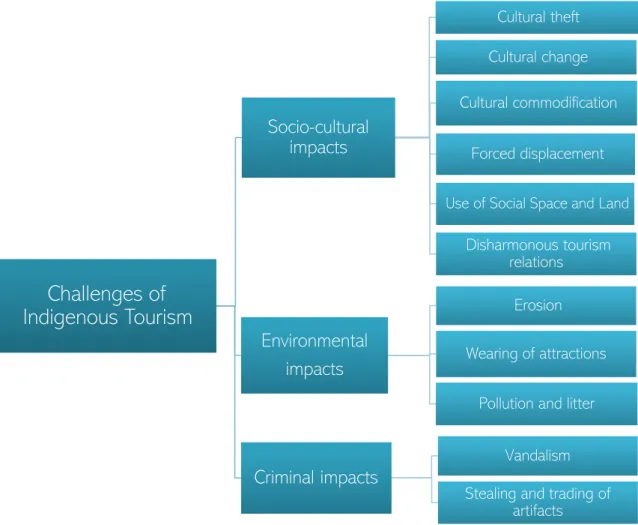
Sámi Peoples and Cultures
Sámi Peoples in Tourism
History and Challenges of Sámi Tourism
A recent example of such behavior is visitors who carved into the walls of a 250-year-old church, an important part of the Sami cultural heritage. According to Seurujärvi, tourists have also contributed to objectifying the Sámi by taking pictures of them without their permission (Quinn 2020). The number of Sámi entrepreneurs has increased, while the use of Sámi symbols among non-Sámi entrepreneurs has decreased significantly (Kugapi et al.
The increase in Sami entrepreneurs can be explained by the economic benefits and job opportunities provided by tourism. The Sámi parliament has also created guidelines for the use of the Sámi culture in tourism, which will be discussed in detail in the upcoming chapter (Kugapi et al. 2020, 9).
Developing Responsible and Ethically Sustainable Sámi Tourism 20
The principles address several different issues, such as recognition of Sami culture and issues of Sami tourism, preservation of cultural heritage, and cooperation and communication between different stakeholders. Acknowledging these problems is one of the tools to end the exploitation of Sami culture, as well as to stop the spread of misinformation about the culture in the tourism industry. In addition to formulating ethical guidelines, the Sámi Parliament is constantly working to improve the position of the Sámi people in society and the tourism industry.
One of the most recent projects is the creation of a cooperation and marketing network within the Sámi community to help tourists choose ethical and sustainable Sámi tourism services (Kuivas 2021). Although development attempts to use Sámi culture more sustainably have created their own benefits, the cultural appropriation debate has also had negative impacts on the field of Sámi tourism.
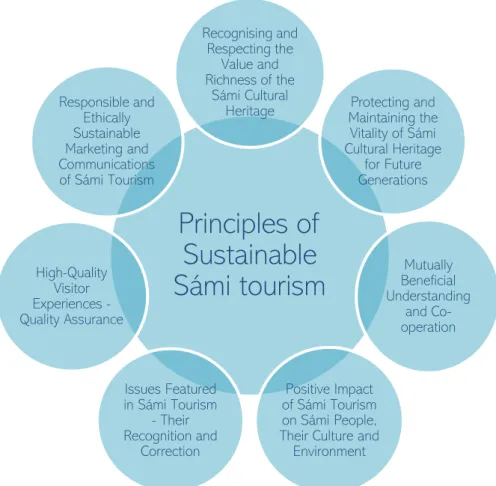
Qualitative Approach
Semi-structured Interview
Successfully conducting semi-structured interviews and achieving the desired result requires careful preparation. Semi-structured interviews are particularly useful for gathering information gained through life experiences, as they provide an open environment for interviewees to share their experiences through theory-based questions (Galletta 2013, 2). Although semi-structured interviews may be time-consuming, they are an ideal method for this research as they allow interviewees to openly discuss the research questions.
Although the process of finding interviewees was challenging, four Sámi tourism entrepreneurs eventually agreed to be interviewed for the purposes of this study. Apart from some minor technical glitches, the interviews were conducted successfully and provided valuable data for the researcher to analyse.
Reliability, Validity and Limitations
Background of Participants
The offer of the companies varied between restaurant and accommodation services and various activities and exhibitions focusing on reindeer herding, nature, jokes and the whole Sámi culture. The answers varied between achieving financial success, gaining preferred customers and preserving the Sámi tradition. Of course, we preserve the travel tradition and consider tourism to be one of the traditional ways of making a living for the Sámi.
Although the range of products and services varies quite a bit between companies, the Sámi culture plays an important role in every entrepreneur's business. It is clear that there is a market for services specifically targeting Sámi culture, which supports Durkin, Perić and Kljaić Šebrek's findings on the growing interest in unique and authentic experiences among cultural tourists.
Sámi Culture in Tourism
To this day, traditions and nature are vital parts of Sami culture (Sametinget 2018, 4), which was also evident in the answers. Paltto once again emphasized the importance of not using false features of Sami culture in the services. These shamanistic things [...] and these different kinds of witch things, they do not belong in Sami culture.
The answers emphasize the importance of using only authentic features of Sami culture in tourism services. Therefore, the use of only authentic features of Sami culture in tourism services is essential for the formation of an accurate image of the culture.
Current State of Cultural Sensitivity
It is clear that Sámi entrepreneurs have noticed the abuse of Sámi culture in the industry in the form of invented traditions, such as the aforementioned "Lappish baptism". P2 also mentioned the objectification of the Sámi in the form of taking pictures of them without their consent, which was also mentioned by Seurujärvi (as cited in Quinn 2020). The importance of cultural sensitivity for the younger Sámi generation was also emphasized.
It has improved in a way that nowadays people are starting to understand the meaning of the Sámi for this region, and also Finnishness. However, it is also important to note that even insensitive use of Sami culture in tourism services can be used as an advantage to raise more awareness of the Sami peoples.
Development Actions and their Effects
Perhaps it emphasized that the content of the program services should be considered more carefully. The rest of the interviewees agreed that the guidelines did not affect their business operations in any way, some saying that they had already carefully considered these issues in their services before the guidelines were created. The interviewees agreed that at least most of the issues considered in the guidelines were useful.
It is not the job of the Sami Parliament, the city or the country to define specifically what an entrepreneur can do and how they should continue with their business. Although the Sami Parliament represents the official view of the Sami people, the ethical guidelines should therefore not be considered an absolute truth, as opinions on Sami tourism also vary within society.
Improvement Ideas
It was also suggested that, if possible, entrepreneurs should focus on creating services based on their background and not on Sami culture. But if there are Finnish entrepreneurs and Finnish guides who don't know the culture and use Sami culture in their company, marketing and everything like that, I think that's a problem and it's wrong. Some participants had also collaborated with non-Sámi entrepreneurs themselves, many of them as subcontractors providing the Sámi element of services to program service providers.
Maybe it can be improved by getting more tourism products based on Sami culture and more operators [...] That we will include elements of our culture as much as possible in the products and broaden the product repertoire, which automatically gives a broader image of the Sami culture. Based on the answers, the dissemination of information appears to be the most important way to improve the state of cultural sensitivity, which is in line with the Sami parliaments' goal of stopping the spread of misinformation about the culture.
Challenges and Opportunities
Mass tourism was mentioned several times during the interviews as having negative impacts on the Sami tourism industry. The authenticity of Sami culture can easily be lost in mass tourism products, which are more focused on cost-efficient practices. Therefore, it can be considered as one of the biggest challenges for the development of culturally sensitive tourism in the region.
Get involved in the modern tourism industry and utilize their own cultural heritage in business operations, if necessary. Cooperation between different stakeholders in the area is also considered important in the development of Sami tourism, which the Sami Parliament is currently working on through creating a cooperation network between Sami stakeholders (Kuivas 2021).
Additional Considerations
Opinions on the use of the culture in tourism and the development of cultural sensitivity vary widely, including within the community. Based on the results of the research, development actions related to Sámi tourism are not common, and it seems that development work is just beginning. Although there are different opinions among entrepreneurs about the development of Sámi tourism, the main goal seems to be the same: to develop ethical, sustainable and culturally sensitive tourism services that emphasize the authentic features of the unique Sámi cultures.
Do you consider it an important concept in terms of Sami tourism activities and development? How would you rate the current situation of cultural sensitivity in Sami tourism products and services in Finnish Lapland?
